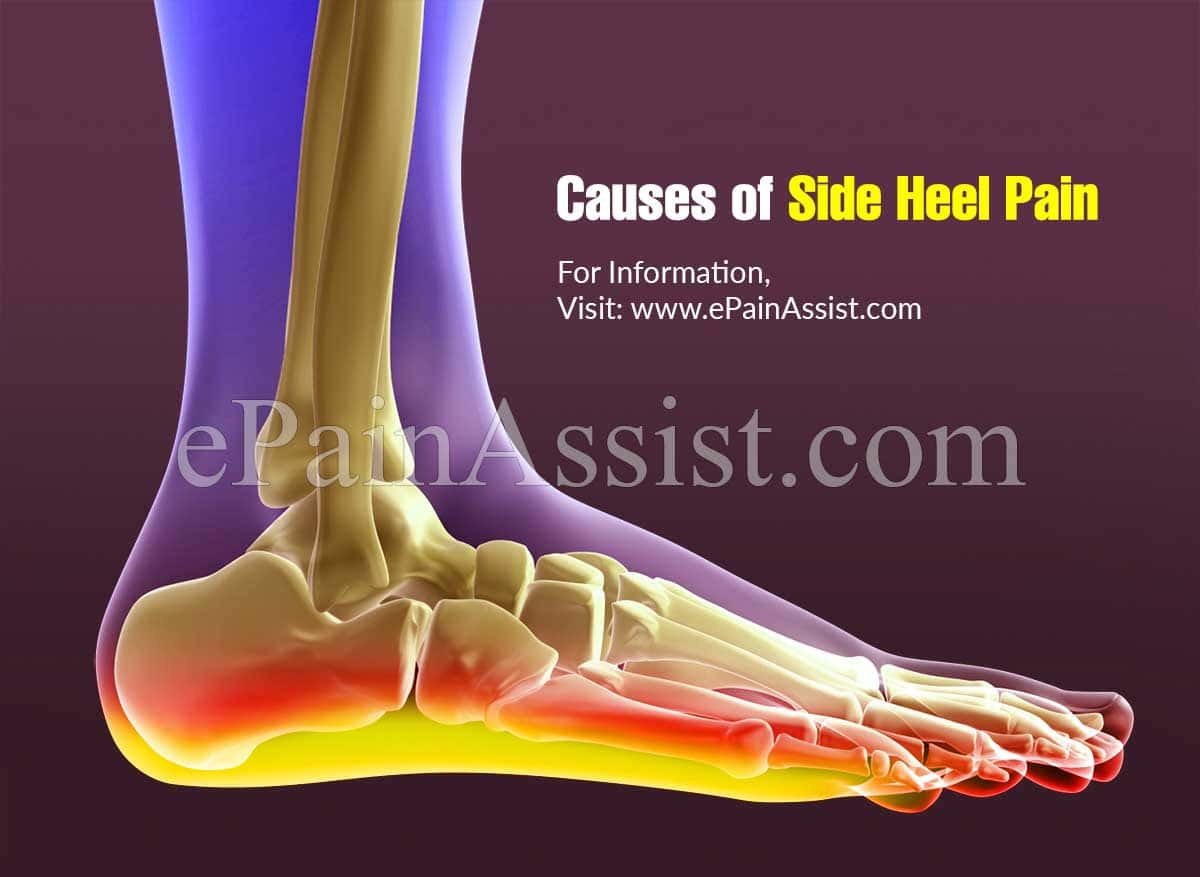Side heel pain runs along the side of the ankle and the foot. It can affect anyone but is found more frequently in the people who are more into fitness or running. Side heel pain can occur before, during or after walking or running and make it literally difficult to even stand.

Causes of Side Heel Pain
- Stress fractures: Excessive physical activity or any kind of repetitive movement of the foot can lead to stress fractures in the calcaneus. The symptoms might be mild in the beginning and might worsen later.
- Arthritis: Both osteoarthritis and rheumatoid arthritis can cause pain on the side of heels.
- Tendon inflammation, joint inflammation or a scar tissue.
- Ankle sprain or ligament injury in the foot.
- Stretched or pinched nerve can also cause side heel pain.
- Peroneal Tendonitis: Peroneal tendons extend from the back of the calf to the outer edge of the ankle on the lateral side of the foot. Peroneal tendonitis occurs due to continuous tension in the peroneal tendons. It leads to swelling, inflammation, and pain on the side of the heels and the lateral side of the foot.
- Tarsal Coalition: This condition occurs when the tarsal bones do not connect properly at the back of the foot, which results in stiffness and pain. It is a rare condition.
- Corns and Calluses: Though the corns or the calluses are not painful but if not treated can penetrate further into the skin and cause pain.
Symptoms of Side Heel Pain
The most common symptoms of side heel pain include:
- Pain
- Swelling
- Tenderness
- Side heel pain can cause difficulty in walking
- Instability of foot
- Frequent sprain
- Difficulty in standing on foot for long
Diagnosis of Side Heel Pain
The physical examination is performed by the doctor to check the mobility and stability of the foot. Doctor also looks for any swollen area, foot deformity, or injury. Treating physician might further advice for an X-ray or an MRI scan to get an inside view of the foot.
Treatment of Side Heel Pain
Mild side heel pain can be relieved by following the RICE method i.e. rest, ice pack, compression, and elevation of the foot.
The ice pack can be applied at an interval of 20 minutes to get relief from side heel pain.
Over-the-counter painkiller medications and anti-inflammatory can help relieve pain and swelling associated with side heel pain.
Physical therapy is also advised as it improves blood flow, relaxes the muscles, and help in healing.
Other treatments for side heel pain include light therapy, light stimulation, or even surgery in rare and severe cases.
Most of the side heel pain is the result of a mild pre-existing condition. They may worsen if not treated. Standing and moving the foot is painful in such cases.
The patient can prevent the foot pain by basic precautionary measures such as rest and wearing comfortable shoes.
- American Orthopaedic Foot & Ankle Society. (n.d.). Peroneal Tendonitis https://www.aofas.org/footcaremd/conditions/ailments-of-the-ankle/Pages/Peroneal-Tendonitis.aspx
- Johns Hopkins Medicine. (n.d.). Foot Pain and Problems https://www.hopkinsmedicine.org/health/conditions-and-diseases/foot-pain-and-problems
- OrthoInfo. (2020). Foot and Ankle Conditioning Program https://orthoinfo.aaos.org/en/recovery/foot-and-ankle-conditioning-program
Also Read:
